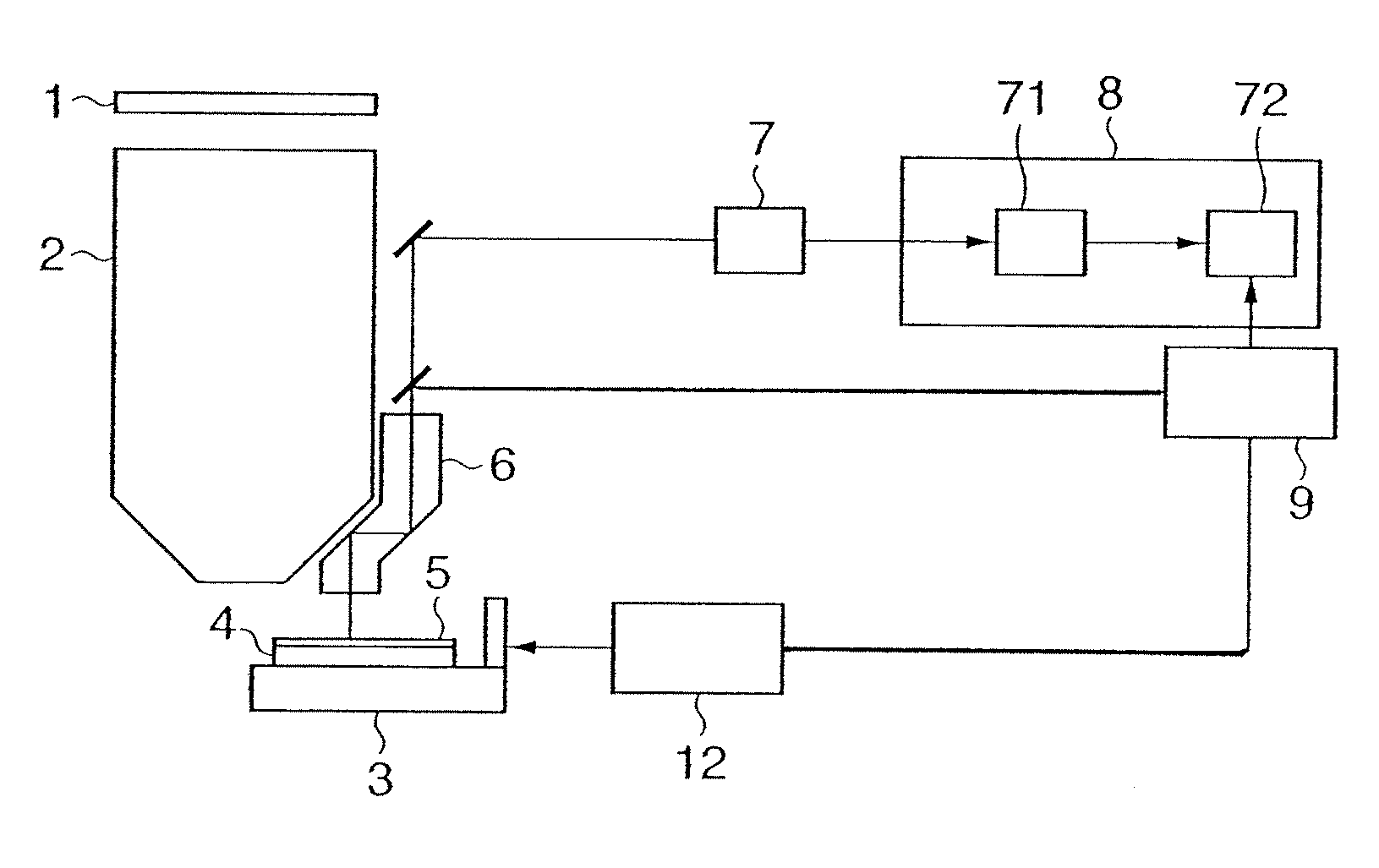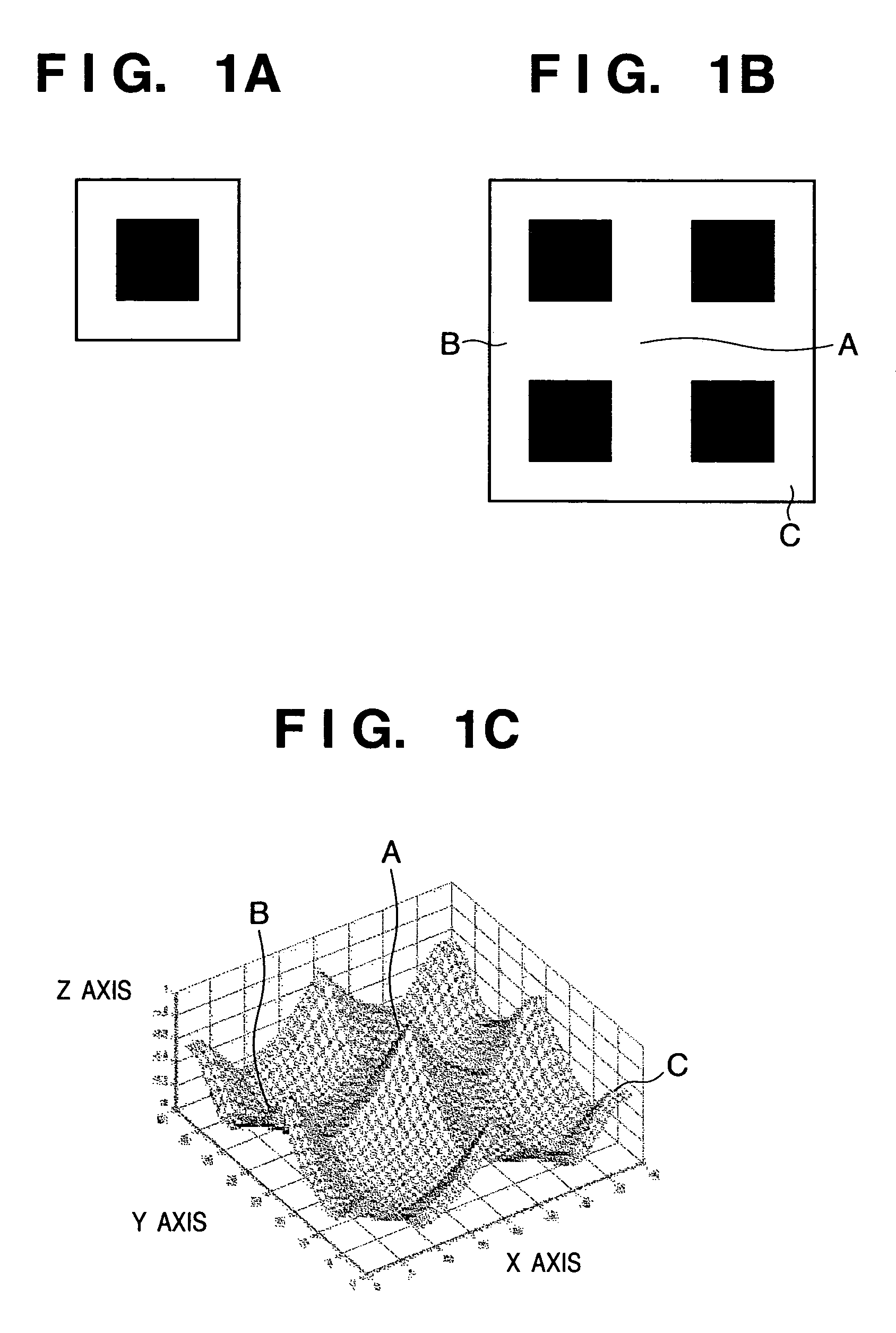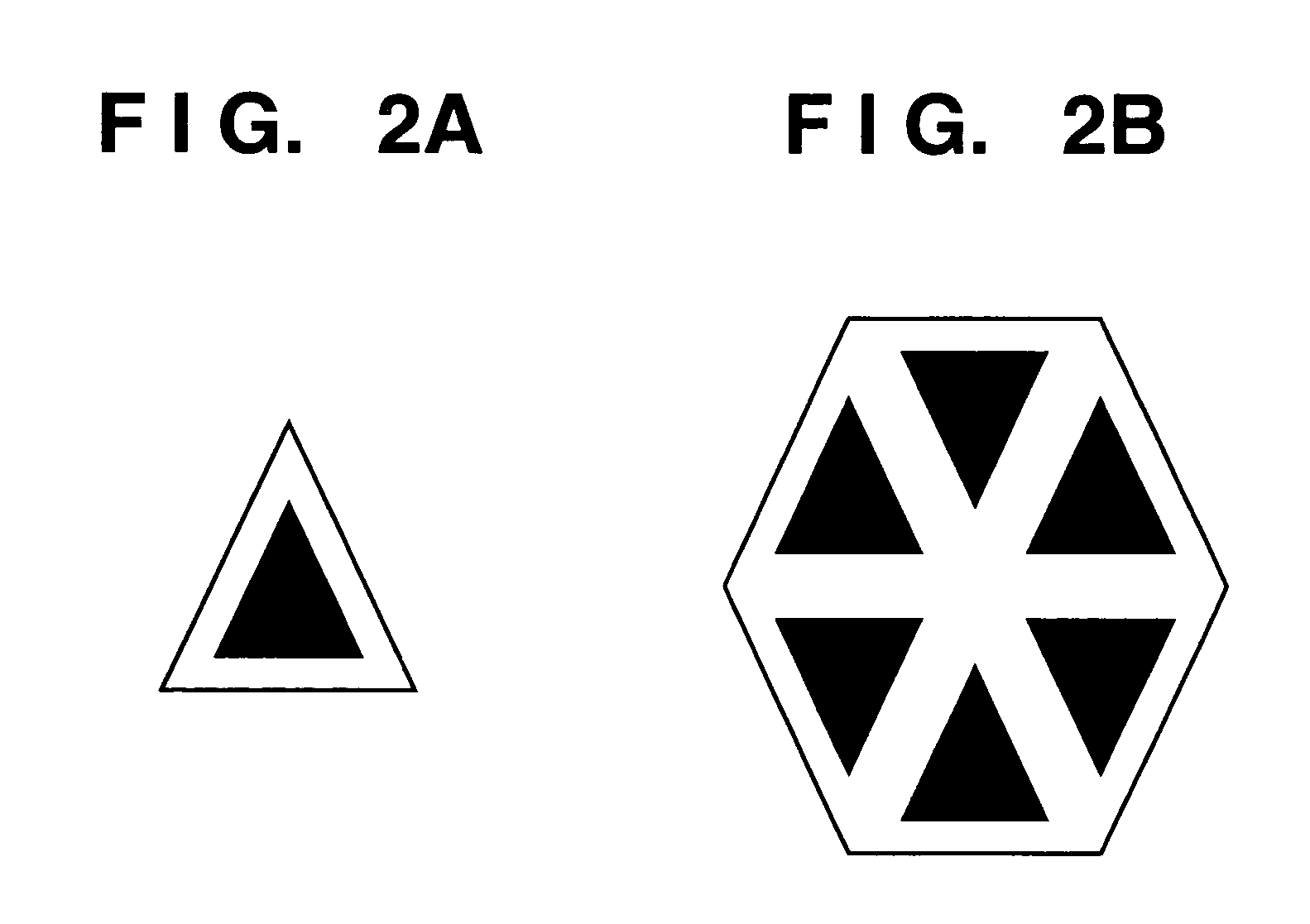Position detection technique
a technology of position detection and detection method, applied in the field of position detection technique, can solve the problems of erroneous detection, marked decline in detection rate, and diminishing of mark signal amplitude and noise signal amplitude, so as to reduce the erroneous detection of mark position
- Summary
- Abstract
- Description
- Claims
- Application Information
AI Technical Summary
Benefits of technology
Problems solved by technology
Method used
Image
Examples
first embodiment
[0068]FIG. 3 schematically illustrates the structure of a semiconductor exposure apparatus. A first embodiment of the present invention is applied to pre-alignment detection by an off-axis scope 6 in FIG. 3.
[0069]A pattern to undergo exposure is present on a reticle 1 and is illuminated using I-rays or an excimer laser in an illumination system (not shown). A wafer 5 is exposed to the pattern by a projection lens 2.
[0070]Pre-alignment is carried out upon placing the wafer in a wafer suction chuck 4 on an XY stage 3 by a wafer transport apparatus, not shown. Since the wafer 5 is placed in the chuck with the precision possessed by the transport apparatus, a transition to precise measurement of the wafer position cannot be performed, as is, in view of precision. Accordingly, a detection mark for pre-alignment (coarse alignment) on the wafer is observed by the off-axis scope 6 constructed externally of the projection lens 2 and an opto-electronic conversion is applied by a CCD camera 7,...
second embodiment
[0106]In this embodiment, calculation by a method different from that of FIG. 6 described in the first embodiment is applied to the calculation of degree of correlation between probability distributions.
[0107]The processing for calculation of the degree of correlation between probability distributions differs from that of the first embodiment. Only the method of calculation of degree of correlation between probability distributions will be illustrated below.
[0108]FIG. 7 shows a processing of S4111 of FIG. 4. The method for calculating the degree of correlation between the probability distributions is explained in accordance with this process.
[0109]First, the probability distribution of the mark and the probability distribution of the partial image of FIG. 4 are read in (S7100).
[0110]Next, the power spectrum of the probability distribution of the mark and the power spectrum of the probability distribution of the partial image are read in (S7101).
[0111]The position-of-interest informa...
third embodiment
[0115]In this embodiment, calculation by a method different from that of FIG. 6 described in the first and second embodiments is applied to the calculation of the degree of correlation between probability distributions. The processing for calculation of the degree of correlation between probability distributions differs from that of the first and second embodiments. Only the method of calculation of the degree of correlation between probability distributions will be illustrated below.
[0116]FIG. 8 shows a processing of S4111 of FIG. 4. The method for calculating the degree of correlation between the probability distributions is explained in accordance with this process.
[0117]First, the probability distribution of the mark and the probability distribution of the partial image in FIG. 4 are read in (S8100).
[0118]Next, the position-of-interest information that was read in at S4110 is read in. This position of interest is a position on the probability distributions (S8101).
[0119]The appa...
PUM
| Property | Measurement | Unit |
|---|---|---|
| real-space energy distribution | aaaaa | aaaaa |
| energy spectrum distribution | aaaaa | aaaaa |
| real-space energy distributions | aaaaa | aaaaa |
Abstract
Description
Claims
Application Information
 Login to View More
Login to View More - R&D
- Intellectual Property
- Life Sciences
- Materials
- Tech Scout
- Unparalleled Data Quality
- Higher Quality Content
- 60% Fewer Hallucinations
Browse by: Latest US Patents, China's latest patents, Technical Efficacy Thesaurus, Application Domain, Technology Topic, Popular Technical Reports.
© 2025 PatSnap. All rights reserved.Legal|Privacy policy|Modern Slavery Act Transparency Statement|Sitemap|About US| Contact US: help@patsnap.com



